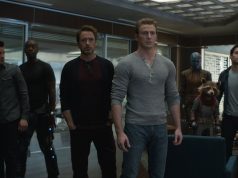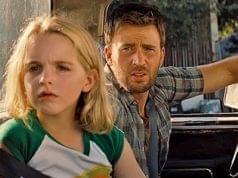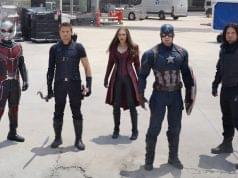The dictionary says a “parody” is “a literary or artistic work that broadly mimics an author’s style AND holds it up to ridicule” (emphasis mine).
“Not Another Teen Movie” does a fine job mimicking the common plot devices and stock characters of teen movies: the studly guy who turns the “ugliest” girl into the prettiest, the off-beat guy who pursues that girl, the horny freshmen, the vapid cheerleaders, etc., etc.
It also accurately points out the cliques and social distinctions that exist in high school, and rightly observes that whoever is like you, that’s who you’re forced to hang out with.
But guess what. There’s more to being funny than just being accurate. If no one had ever before pointed out the subcultures in high school (and in high school movies), then the “it’s funny because it’s true” theory might work. But since these have already been discussed, noticed and dealt with at length, it becomes “Not Another Teen Movie’s” lot not just to point them out, but to make fun of them. It must mimic what is done in other movies, AND take it a step further by mocking it.
This it does not do. “Not Another Teen Movie” shows us the conventions of the teen genre, but has no idea how to make fun of them. It thinks that re-creating events from famous movies is the same thing as “parody” or “satire,” when in reality, re-creating an event is just re-creating an event.
Putting characters in detention in a room that looks just like the room in “The Breakfast Club,” and then having the SAME ACTOR from that movie (Paul Gleason) show up and engage in pretty much the same dialogue from that movie is NOT A PARODY. It’s a reference. You’re referring to another movie, and if we recognize what you’re referring to, maybe we smile knowingly. But we don’t laugh at it unless you somehow tweak the situation, thus “pointing out the folly, vice or stupidity” of the referrent material (the definition of “satire”).
And how dare a movie make fun of gross-out comedies like “American Pie,” and then indulge in the same excrement-for-laughs behavior as the films they’re mocking! Either you’re saying that sort of humor is worthless, or you’re using it. You can’t have your crap and eat it, too.
“Not Another Teen Movie” does itself another disservice by addressing both classic ’80s teen movies as well as recent ’90s ones. The film’s best shot at real parody — a scene with Molly Ringwald — is wasted because most of the film’s target audience is too young to fully appreciate the greatness in hearing Molly Ringwald grumble, “[expletive] teen-agers.”
There are cast members in this movie, but none you’ve heard of. They were chosen because they fit the types — jocks, nerds, sluts, and so on — and not because they can act.
The movie’s one good scene — and it borders on greatness — is an out-of-nowhere musical number just before the prom. This scene says that teen movies amusingly place too much emphasis on the importance of The Big Dance, but it does so without anyone actually saying the words, “Teen movies amusingly place too much emphasis on the importance of The Big Dance.” Throughout the rest of the movie, anytime a satiric point is to be made, it is made by someone saying it point-blank, which generally removes all possible humor from it.
In this movie’s universe, the best way to make fun of the idea of token black characters is not to show the ridiculousness of it, but to have a character say, “I’m the token black guy” and leave it at that. Nothing is implied or subtle. Everything is spelled out in big, stinky letters, and then you’re smacked in the face with it.
“Not Another Teen Movie” is, in fact, just another teen movie. In director Joel Gallen’s attempt to spoof the genre, he has merely added another lame entry to it. This one is stupid, obvious, unfunny, desperate and insulting — even for people who like teen movies. It was a great idea for a parody, but it was handled just about as badly as it could have been.
D- (1 hr., 29 min.; )





